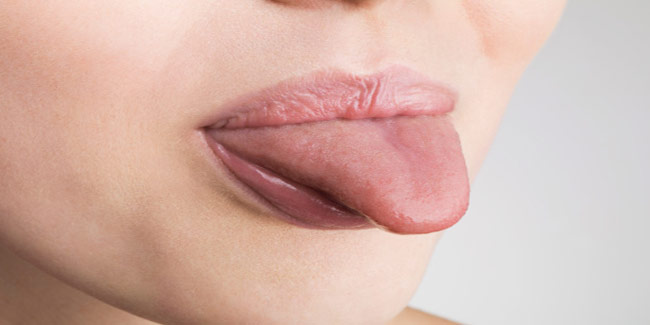
The tongue, mostly made up of muscles, is used for tasting, chewing and swallowing food. It is attached to the mouth's floor and is covered with a mucus membrane. The upper surface of the tongue is covered with small bumps called papilla which have most of the taste buds sitting on them. These taste buds enable us to taste our foods and beverages. The tongue also helps us to move the food inside our mouth for better chewing and swallowing. Besides taste and moving the food, the tongue also plays a vital role in allowing us to communicate. It helps us form the words we want to speak. There are several problems that can affect your tongue, causing pain, sores, swelling, and changes in taste, change in colour and texture.
Table of Content:-

A healthy tongue is one that is pink and moist with thin white coating on the surface. Doctors usually check the tongue using a depressor or stick bas it can be a very good measure of a person's physical well-being. There are many different reasons for changes in the tongue's function and appearance. While most of these issues are not serious and are caused by minor infections or mouth injuries, however, sometimes the symptoms might be due to an underlying condition that requires immediate medical attention.
Tongue Problems
Black tongue: Usually a harmless condition, black tongue can be caused by smoking, soft diet, medications, dry mouth or poor oral hygiene. However it can also be associated with elongated tongue papilla which is usually caused by a change in the normal bacteria in the mouth after using antibiotic treatment.
Swollen tongue:
It is a less common condition and may require immediate attention as it can be a symptom of a bigger medical condition, such as tongue cancer, overactive thyroid, leukemia, anemia, and Down syndrome. However if the swelling is sudden and for a short duration, it is most likely to be an allergic reaction.
White Tongue:
It is usually a result of drug exposure from smoking or drinking alcohol. However, if there are white lines or bumps on the tongue then it may be an inflammation called oral lichen planus which is usually caused by poor oral hygiene, hepatitis C or allergies.

Hairy tongue:
when the tongue appears to be furry or hairy, is most likely caused by a course of antibiotics. It can also develop if you consume too much of an irritating substance, such as coffee or mouthwash, or if you smoke.
Red tongue:
If the redness of the tongue disappears after some time then it is most likely due to some red-coloured foods that turned the tongue red. If the redness persists for long then it can be a sign of an underlying medical condition like vitamin deficiency or kawasaki disease.
Bright pink tongue:
Pink tongue is usually caused by the deficiency of vitamin B-12, folic acid or iron. However people who have an allergy to gluten may also get pink tongue occasionally after eating gluten foods.
Burning:
A burning sensation on the tongue may be a symptom in women who are postmenopausal. It can also be caused by exposure to irritants, such as by smoking.
Pain:
Pain in the tongue is usually a result of an injury caused by accidentally biting your tongue or of a minor infection. Another possible reason for pain is the development of canker sores on the tongue which are usually caused by a virus. Other, less common reasons for tongue pain include cancer, anemia, oral herpes, and irritating dentures or braces.
Erythroplakia:
It is a red patch, potentially premalignant, that cannot be rubbed off on the tongue. In case of erythroplakia doctors usually recommend a biopsy with an oral surgeon or ENT specialist to rule out oral cancer.
You can prevent many tongue problems by improving your diet, smoking cessation and practicing good oral hygiene.
How we keep this article up to date:
We work with experts and keep a close eye on the latest in health and wellness. Whenever there is a new research or helpful information, we update our articles with accurate and useful advice.
Current Version
